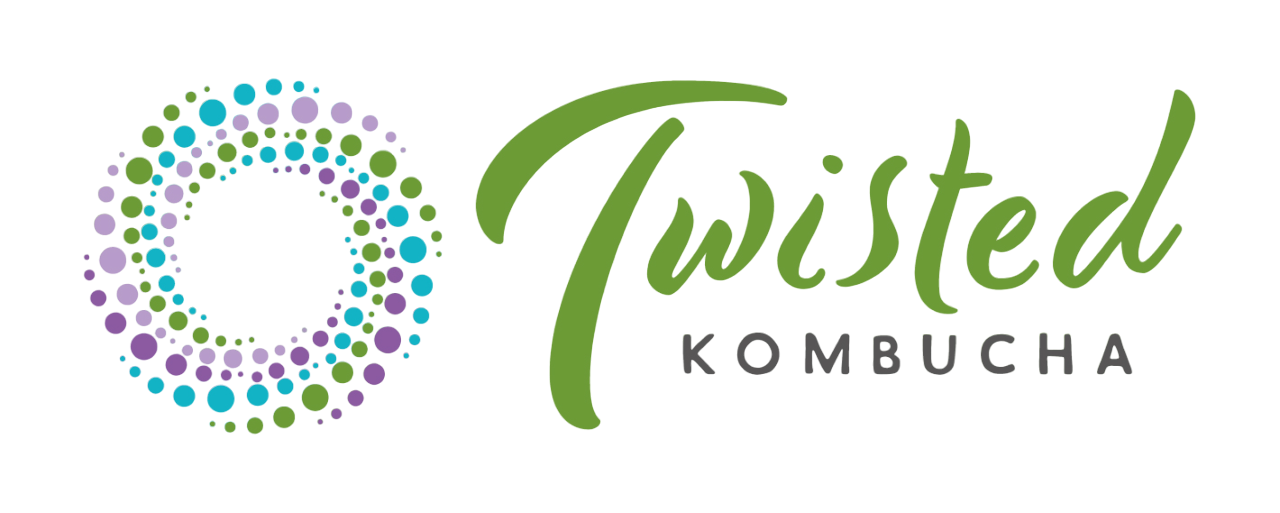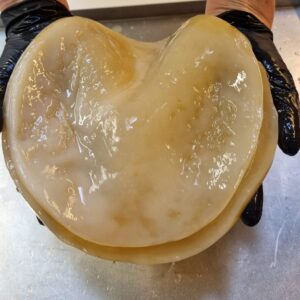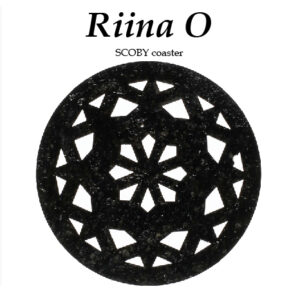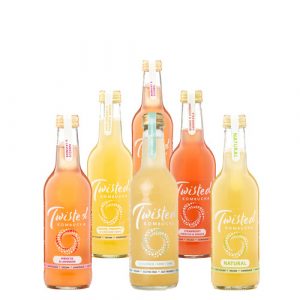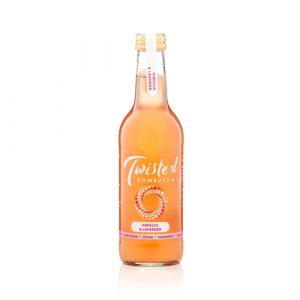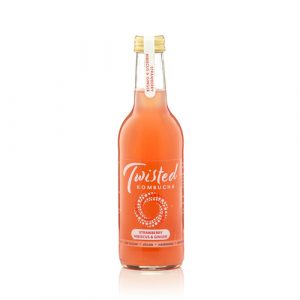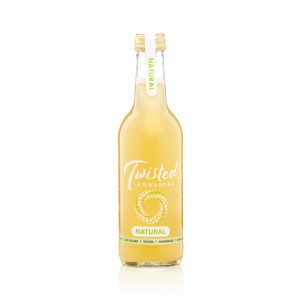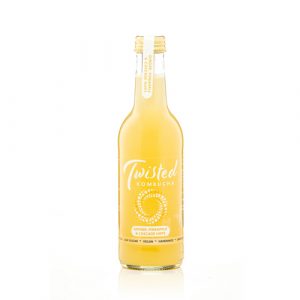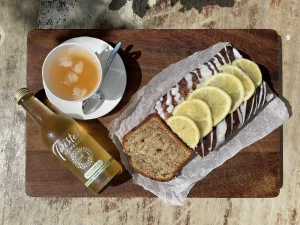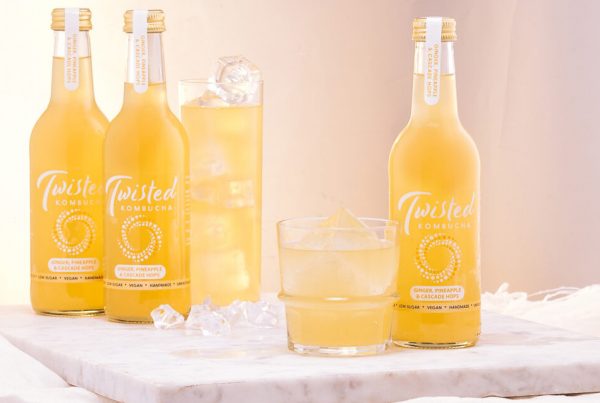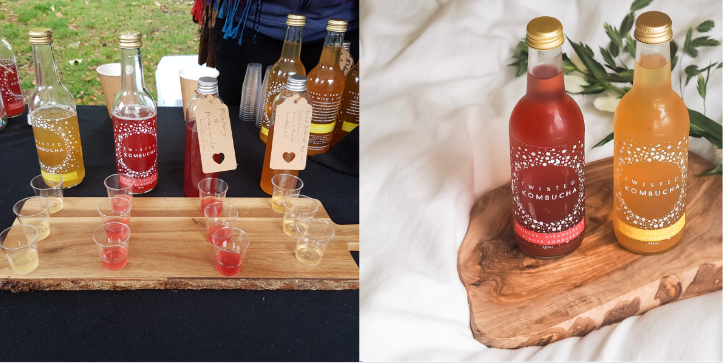
Hello Booch Lover, it’s Lou, and i’m here to share an interesting & educational journey into the world of making your own kombucha.
Homemade kombucha is a real treat—and making it gives you a hands-on look at the fascinating world of fermentation and live cultures. It’s a easy way to grow beneficial microbes at home, creating probiotic-rich drinks which can support your gut microbiome. Not only is it cost-effective, but it also allows you to control the ingredients and flavours you love. This not only benefits your pocket but also nourishes your gut microbiome, your way!
In this blog, I’ll explain how to make kombucha at home. I spent years studying kombucha fermentation, even analysing with it in the lab during my university studies. We’re still learning more about the science behind kombucha fermentation and how it supports gut health. You’ll learn why kombucha is good for you, and explore the nutritional reasons on how it balances our gut microbiome to heal the gut, and what makes it such a popular healthy drink.
What is Kombucha?
First things first – what exactly is kombucha? Kombucha is a fermented tea that’s been around for centuries. It’s made by combining tea, sugar, and a live culture called a SCOBY—short for Symbiotic Colony of Bacteria and Yeast. This living culture transforms sweet tea into a naturally fizzy, tangy drink through fermentation. The result? A refreshing kombucha packed with live bacteria that support your gut microbiome, along with enzymes, organic acids, and certain vitamins that can benefit your overall health.
Table of Contents
Is Kombucha Good for You?
Absolutely. Kombucha is often hailed for its gut-loving, immune-boosting properties. It’s a source of probiotics, those friendly microorganisms that work wonders for your digestive system and overall well-being. These probiotics can enhance digestion, support immunity, and even impact your mental health positively. So, yes, kombucha is indeed a beneficial beverage with science to back its claims.
If you want to learn more about the many benefits of kombucha, read our blog all about it!
Equipment
Before we get into the nitty-gritty of making kombucha, let’s talk about the equipment you’ll need. The essentials include:
- A Large Glass Jar: It’ll be your kombucha brewing vessel. Opt for glass to avoid unwanted chemical reactions.
- A Breathable Cloth: You’ll need this to cover your jar. It allows your kombucha to breathe and keeps contaminants out.
- A Rubber Band: This is handy for securing your cloth over the jar.
- Tea and Sugar: Go for black, green, or white tea and plain white sugar. Remember, the sugar feeds the yeast and bacteria, so you won’t consume much of it.
- A Kombucha Starter: The magic ingredient. The starter can be a piece of kombucha scoby or some kombucha from a previous batch.
What is a Scoby and Where Can I Get One?
Ah,The first thing you have to do is find a scoby. Scoby stands for Symbiotic Culture Of Bacteria and Yeast. It’s the star of the show, responsible for fermentation. To get your hands on a scoby, you can check with fellow kombucha brewers.
Alternatively, you can use a Twisted Kombucha starter if you want to begin on an easier note, it’s the same one I have and comes with great instructions.
Easy Kombucha Recipe
Now, let’s jump into the practical part – making your very own kombucha. Making kombucha may seem like a straightforward process, but there’s a lot that goes on to acheive the end product. Here’s a guide to kombucha for anyone who would like to try making it, but also is keen to know about the microbiology behind it.
- Brew the sweet tea.
Here, you’re essentially feeding the culture – the yeast and bacteria. The sweet tea made using tea derived from the Camellia sinensis species. This provides essential nutrients they require for their metabolic processes. The sugar acts as the food for the cultures to thrive which fuels the fermentation process, while the tea adds a complex range of compounds, including tannins, caffeine, theanine, & polyphenols, which are rich in antioxidants and flavour. - Allow it to cool.
This step is primarily about temperature control. Yeast and bacteria have a preferred range for fermentation, usually around 24-29°C. Cooling the tea to this temperature prevnets harming the microbes as they are temperature sensitive. - Add your kombucha starter (SCOBY) or a previous finished kombucha.
Your kombucha starter tea is the master ingredient. It’s the source of the microbial magic. If you’re also using a scoby, it’s a cellulose structure created by bacteria (primarily Acetobacter). The most important ingredient is the starter tea. The starter’s role is to inoculate the sweet tea with the microorganisms to initiate fermentation.The goal is to create an environment that supports microbial growth. As the yeast and bacteria breaks down and digests the sugar, they produce the organic acids, carbon dioxide, and diverse flavour compounds. - Cover the container with a breathable cloth and let it sit in a warm, dark place.
Now, it’s time to let the fermentation process begin. The breathable cloth serves a dual purpose. It allows airflow, or aerobic fermentation which is essential for the microorganisms’ respiration, and it keeps unwanted contaminants at bay.
This is where the microbial synergies begins to play. The yeast consumes the sugar and produces alcohol, or ethanol. This alcohol is then consumed by the bacteria, which transform it into carbon dioxide and organic acids – primarily acetic acid (responsible for the tangy taste) and lactic acid. These organic acids give kombucha its characteristic flavour profile and contribute to its numerous health benefits.
Remember, time & love are the secret ingredients. You’ll have to let your brew sit for some time – usually about a 7-10 days, but this can vary. It’s the microbial orchestra inside the container that’s creating the magic.
How Long Does Fermentation Take?
The duration of fermentation varies depending on factors like temperature and personal preference. It’s during this time that the microbial community in your brew multiplies and carries out the intricate biochemical reactions, turning tea and sugar into a complex, living elixir. Taste testing is your best indicator – when your kombucha reaches the perfect sweet-tangy balance, it’s ready for the next steps.
As you master the art and science of kombucha-making, you’ll develop a deeper appreciation for this ancient beverage. It’s not just about brewing a drink; it’s about nurturing a living culture and exploring the fascinating world of microorganisms. So, experiment, enjoy the process, and savor the health benefits that come with each delicious sip. And if you ever need a flavorful, probiotic-packed companion for your journey, Twisted Kombucha is here to delight your taste buds and nourish your gut.
What Temperature Should I Brew Kombucha At?
The ideal temperature range for brewing kombucha is around 75-85°F (24-29°C). At these temperatures, the yeasts and bacteria in your brew will work their fermentation magic. Too hot, and you risk harming your scoby. Too cold, and the fermentation process might stall.
When Is the Kombucha Ready?
The big question: when do you know your kombucha is ready? Typically, it takes about 7-10 days. But the best way to check is to taste it. It should have a pleasant balance of sweet and tangy flavors. If it’s too sweet, give it more time. If it’s too sour, you might’ve let it ferment a tad too long.
What Is ‘Primary Fermentation’ and ‘Secondary Fermentation’?
Kombucha has a two-stage process: primary fermentation and secondary fermentation.
- Primary Fermentation: The first stage of the kombucha-making performance. It’s where the transformation begins. In this stage, the star of the show, the scoby (that cellulose structure often referred to as the “mother” of kombucha), takes center stage in the sweet tea. During this stage, the natural yeast and bacteria in the SCOBY begin to ferment the sugars, turning them into beneficial organic acids like acetic and lactic acid, along with probiotics! This is the core of the process, where most of the flavour and gut-health benefits develop. The result is a slightly tangy, lightly fizzy drink full of live, beneficial microbes that support your gut microbiome.
- Secondary Fermentation: Think of this as the encore, the extra special part of the show that adds pizzazz to your kombucha. During the secondary fermentation, you have the creative license to introduce new characters to the plot. This is the time to infuse your kombucha with exciting flavors, such as fruits, herbs, or spices. It’s when your kombucha gets an extra layer of complexity and aroma. But there’s more to it than just flavor. In the secondary fermentation, the kombucha ferments in a sealed bottle. This controlled environment allows carbonation to build up, resulting in those delightful fizzy bubbles. The added flavors and natural carbonation are what make your kombucha truly unique and refreshing. Secondary fermentation ensures that your kombucha is not only a probiotic powerhouse but also a delightful treat for your taste buds.
In essence, primary fermentation is where the kombucha’s core character is developed, and the secondary fermentation is where you can add your personal twist to the flavor profile and make it delightfully effervescent. It’s like producing a symphony with a scoby as the conductor and the flavors as the orchestra, creating a delightful harmony of taste and texture. So, if you enjoy experimenting with flavors and experiencing the effervescence of kombucha, the secondary fermentation is where your inner flavor artist can shine.
Safety Tips
While kombucha is generally safe, a few safety tips are crucial:
- Always wash your hands and equipment thoroughly to avoid contamination.
- Be cautious about the cleanliness of your brewing vessel.
- If anything looks or smells off about your kombucha, it’s best to discard it.
- Remember that kombucha is a fermented beverage and contains trace amounts of alcohol, so consume it responsibly.
Conclusion
So, there you have it, a crash course in the art and science of brewing kombucha. It’s not just a drink; it’s a living elixir that’s both science and a dash of magic. Now, as you venture into the world of kombucha, enjoy your journey and savor the benefits it brings to your gut health and overall wellness.
And, of course, if you want a sip of Twisted Kombucha, our flavorsome brew is always ready to delight your taste buds and nourish your body.
Cheers to a healthier you!
